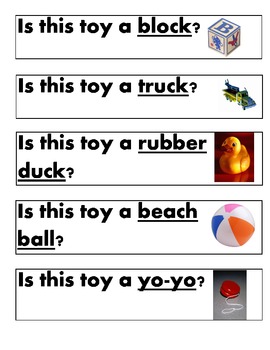


They failed in that first effort, but the petitions kept coming, each one widening their constituency, until three decades later they finally won political representation.ĬNN: When has making big statements online not brought about much change?īeckerman: The Arab Spring is a great example of this. That first petition, delivered to Parliament in 1839, had 1.3 million petitions and was on a scroll that stretched 3 miles long. It was a long struggle, and instead of social media they had the pen-and-paper petition, which they took around the country, starting up conversations and trying to convince people to sign. Working-class people at the time did not have the right to vote, so they came up with the idea of petitioning Parliament for that right.
#Yes or no social questions kids how to
Josh Edelson/AFP/Getty Imagesĭo you have 'eco-anxiety'? Here's how to find outīut to take a concrete example, you can look at Chartism, a movement that began in England in the 1830s. This lets you take a step back and see which tools exist and figure out which ones are the right ones to pick up.Ī firefighter works the scene during the Creek wildfire in Madera County, California on September 7, 2020. You need a space where you can do more than just exclaim how you feel but where you can also have a conversation about it and build on one another’s ideas. We do our kids a disservice by not teaching them this.ĬNN: Your book demonstrates the value of cultivating activism in intimate places – as opposed to in public or on social media.īeckerman: It’s helpful to be able to gather with a small group of people, in person or online, and share ideas and not worry about being shamed for something you proposed. If something is easy, it is often forgettable.Ī problem like climate change demands fresh thinking as well as careful and sometimes painstaking work. It is the parents’ role to connect that to the bigger, more exciting things they see on TikTok.ĬNN: Effective activism can be boring, right?īeckerman: It’s important for kids to understand this because it is often out of the hard work of bringing a cause to life, walking the street to collect signatures, organizing community forums, contacting local politicians again and again, that your sense of commitment and solidarity grows. To go on a Saturday to work at a soup kitchen or register people to vote might feel like a small boring activity. Parents also need to manage the expectations of kids who might not understand that real change is slow.

Help them think: “What is the goal? What is my goal? And what am I doing to achieve the goal?” It’s OK if their goal is small. It doesn’t take much dedication to commit to climate change or ending racism on social media, compared with the hard work of committing to doing something about it in real life. Swedish activist Greta Thunberg urges action to combat the climate crisis in April 2019 in Rome. You don’t want kids to think that all they have to do is post a hashtag of something they agree with or post a picture at a protest to be an effective activist. This could be volunteering at a soup kitchen or helping plan a protest.ĬNN: What could we say to them about their online activism?īeckerman: It’s important for parents to make a distinction between expressing solidarity with causes you believe in and doing something to effect change. I suggest that parents direct kids toward local activism connected to whatever cause they care about, places where they will feel that their growing sense of commitment to a cause can be attached to concrete action. The role of a parent can be to help them figure out what to do with it. Gal Beckerman: It’s wonderful when kids gain an interest in a cause that impassions them and gets them excited, and if that comes from social media or something they are seeing online, that’s great. What could a parent encourage them to do next? T his conversation has been edited and condensed for clarity.ĬNN: Your kid reads or hears about a cause at school and is excited about it. He also talks about why a visit to a soup kitchen or a day spent registering voters will teach them more about changing the world than TikTok. He explains why dinnertime or drive-time talk, or conversations in small groups, are so important in helping kids understand the complexity of issues and perfect the art of speaking and listening. His lessons are relevant to young activists, including the many who are fired up by Earth Day to heal and protect our planet.ĬNN spoke with Beckerman, a father of two, about why children need to understand the quiet and slow side of activism. In his new book, “ The Quiet Before: On the Unexpected Origins of Radical Ideals,” Beckerman examines social movements throughout history, chronicling how effective revolutions tend to start with intimate conversation and deliberation about issues, not shouting in the streets or, today’s version, online.


 0 kommentar(er)
0 kommentar(er)
